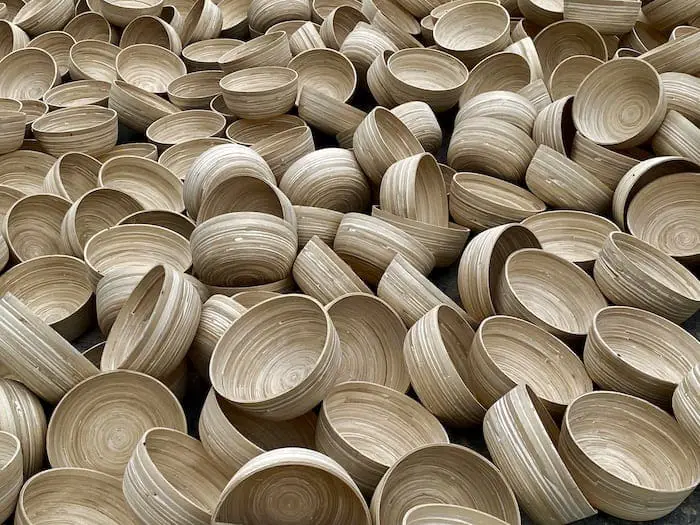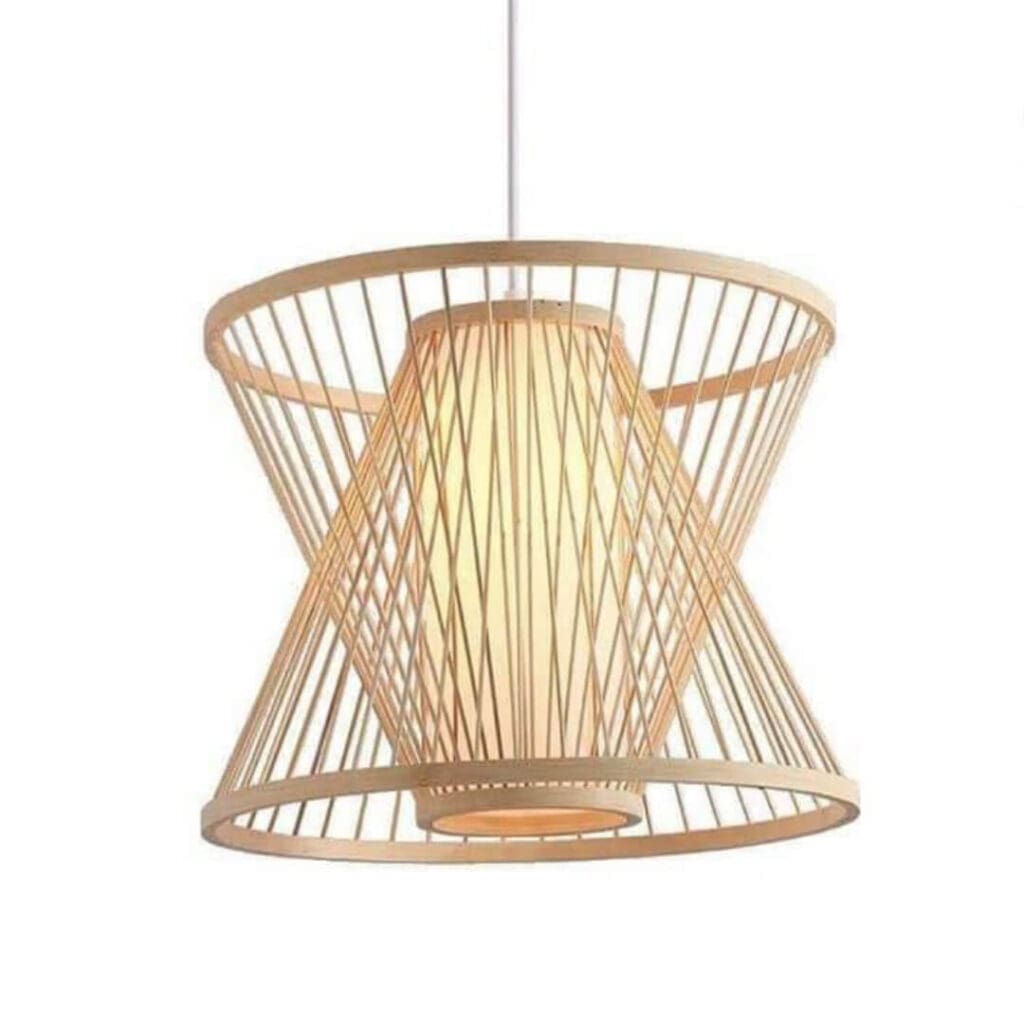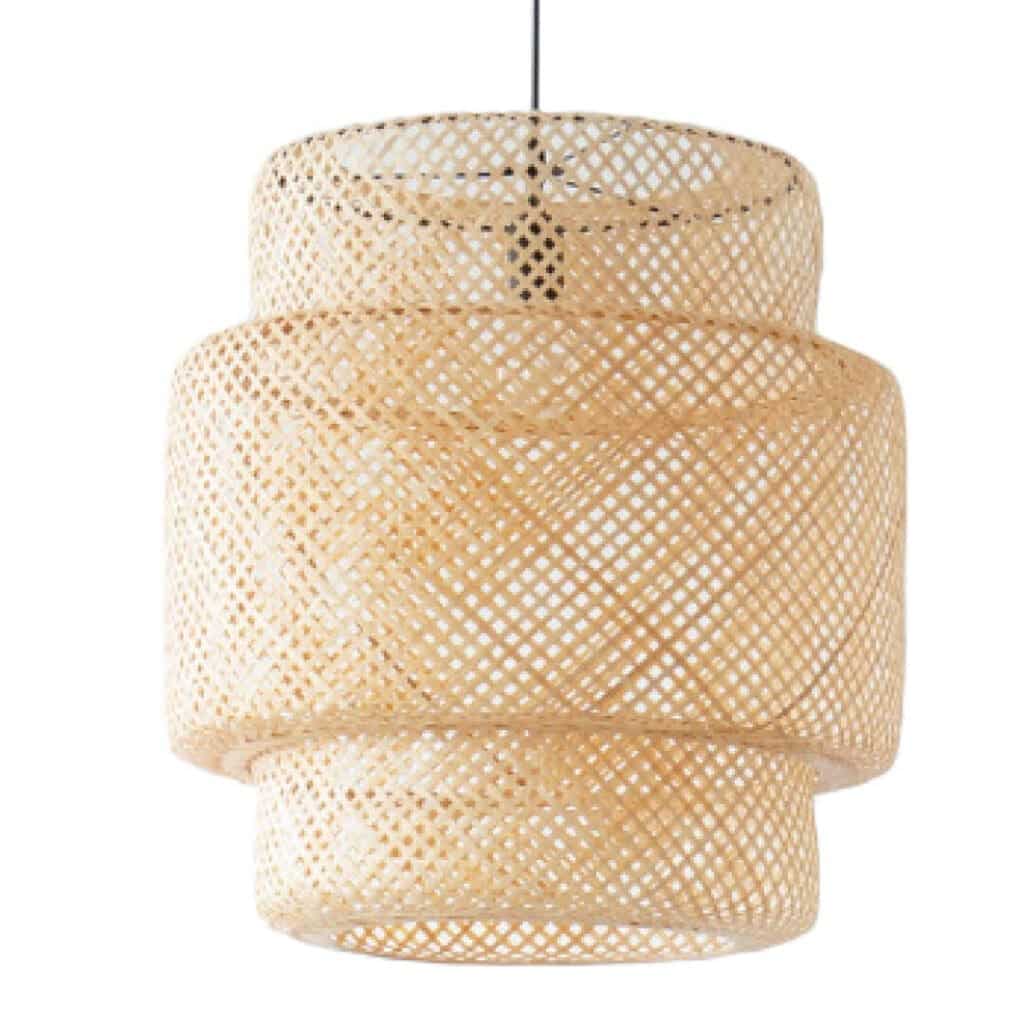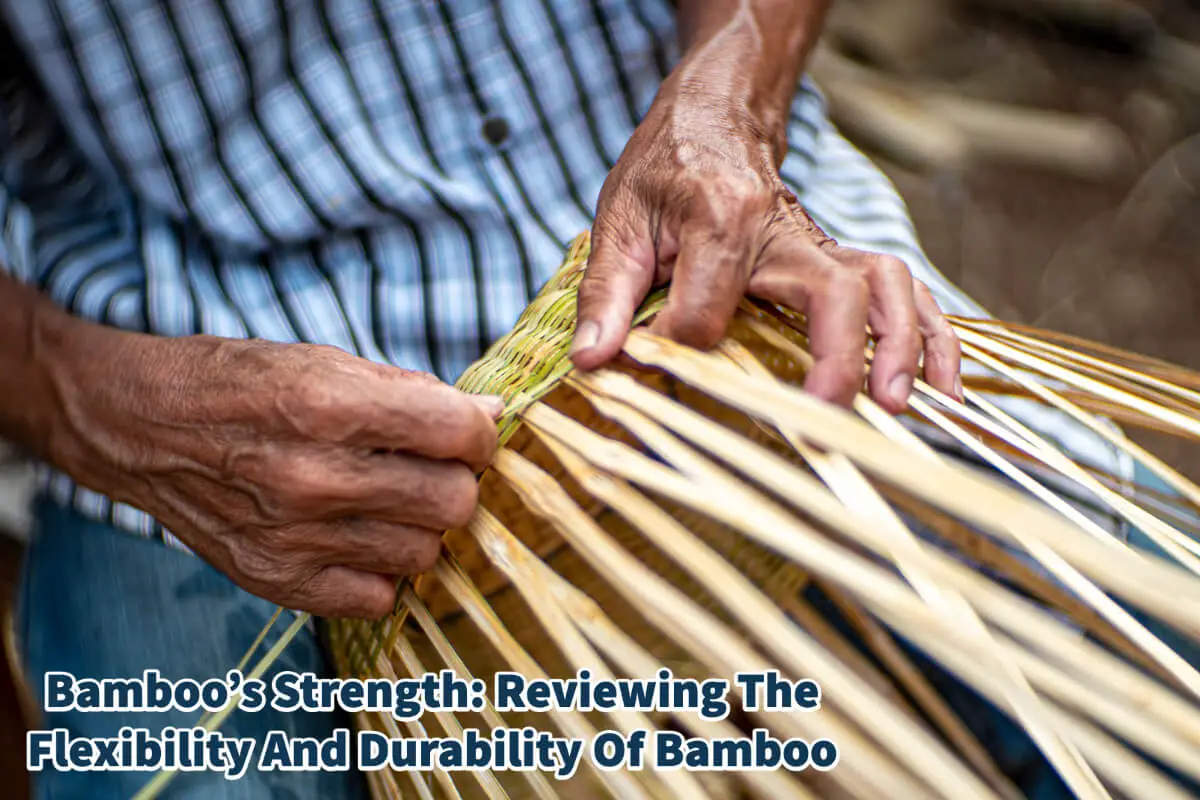When I was growing up, we always had a bamboo plant in our home. My father’s Uncle was a US Department of Agriculture world bamboo expert.
Apart from its strength, bamboo is also renowned for its flexibility. It can bend without breaking, providing an added advantage in areas prone to earthquakes or other natural disasters. In these instances, the flexibility of bamboo enables it to withstand intense pressure and absorb shocks far better than rigid materials like concrete or steel.
Table of Contents
- The Bamboo Conundrum: A Profound Examination Of Its Strength
- Bamboo: The Sustainable Architectural Marvel
- Comparative Analysis: Bamboo Versus Other Materials
- The Future Of Bamboo: A Green Material For A Sustainable World
- Frequently Asked Questions
- Related Content
The Bamboo Conundrum: A Profound Examination Of Its Strength
Bamboo, an intrinsic member of the Poaceae family, has been valued for its versatile use throughout human history. It’s widely employed in diverse fields, from edifying architecture to resonating musical instruments.
However, the potency of its strength often leaves one astonished. Herein, we delve deep into the resilient world of bamboo.
Understanding The Internal Anatomy Of Bamboo
The secret behind bamboo’s immense strength lies in its unique structural composition. It consists of hollow cylindrical stems, or culms, interspersed with nodes, reinforcing its stability.
These culms are made of long and unbranched chains of cells called fibers, which are high in lignin, a complex polymer that provides structural support.
Bamboo fibers are solid, offering a strength greater than steel based on weight. This attribute makes bamboo an ideal candidate for myriad construction applications, regardless of their scale.
Apart from being naturally robust, the strength of bamboo can be enhanced through different processing methods. Carbonization, which involves heating bamboo in an environment devoid of oxygen, fortifies the material, making it more impervious to water damage and insect infestation.
Consequently, this bamboo version is applied in outdoor furniture and decking, where resilience is critical.
Bamboo: The Sustainable Architectural Marvel
Bamboo stands out in the building sector as we advance towards greener alternatives. This rapidly renewable material brings an aesthetic appeal and provides an environmentally friendly choice compared to traditional woods.
Its strength and sustainability contribute to its popularity in furniture and flooring applications.
To better comprehend bamboo’s strength, it’s essential to gauge it numerically. The average compressive strength of bamboo, a measure of how much load it can bear without deforming, is roughly 14,000 pounds per square inch (psi).
Comparatively, concrete, a common building material, offers only about 2,500 psi compressive strength, underscoring bamboo’s superior compressive strength.
But strength isn’t a single-faceted characteristic. Tensile strength, the ability to withstand pulling forces, is another crucial determinant of a material’s overall strength. Bamboo offers an average tensile strength of approximately 1,400 psi.
While not as high as its compressive strength, it still significantly surpasses most building materials, including concrete, which only provides a tensile strength of about 300 psi. Therefore, even though bamboo may not be the most robust material known to humanity, it offers a potent blend of strength and versatility that few materials can match.
The Exemplary Flexibility And Durability Of Bamboo
Alongside strength, bamboo is applauded for its impressive flexibility. The material can bend considerably without breaking, a trait especially beneficial in regions prone to natural disasters like earthquakes.
The flexible nature of bamboo allows it to absorb shocks much more effectively than rigid materials like concrete or steel, thus providing superior resilience.

Durability further accentuates bamboo’s strength. Bamboo can sustain harsh weather conditions for decades, thanks to its inherent resistance to pests and rot when treated and maintained correctly. This resilience has made bamboo a preferred choice for outdoor structures across diverse climates globally.
Influence Of Species And Growth Conditions On Bamboo’s Strength
However, it’s important to remember that the strength of bamboo isn’t uniform. Over 1,500 bamboo species exist globally, and their strength can vary substantially depending on species and growth conditions.
Factors like soil type, sunlight, and water availability during growth can greatly influence bamboo’s strength and durability. Certain species, like Guadua angustifolia, are renowned for their robustness and are often preferred for construction.

Additionally, how bamboo is cut and utilized also plays a role in determining its strength. Like wood, bamboo has a grain — the pattern of the vascular bundles in the stem. Understanding this grain is vital, as it can affect bamboo’s behavior under pressure. Typically, bamboo exhibits more strength along the grain (lengthwise) than across it (widthwise).
Comparative Analysis: Bamboo Versus Other Materials
Comparing bamboo with other commonly used materials also helps underscore its strength. While we’ve already juxtaposed bamboo with concrete, comparing it with steel — another construction mainstay — is fascinating.

Notably, bamboo has a higher strength-to-weight ratio than steel, which can bear more load than its weight. While steel offers a ratio of about 60, some bamboo species can reach a ratio of over 80. This high strength-to-weight ratio makes bamboo an ideal construction material, lighter and potentially more robust than steel.
The Future Of Bamboo: A Green Material For A Sustainable World
As our world grapples with environmental challenges and climate change impacts, using sustainable materials like bamboo has never been more critical. Bamboo’s impressive strength and sustainability make it an ideal solution for a sustainable future.

The future indeed appears bright for bamboo. Its unique amalgamation of strength, flexibility, sustainability, and aesthetic appeal offers a wealth of opportunities for innovation in design and construction.

As more research delves into its properties and potential, bamboo is set to play an increasingly prominent role in our lives.
The question ‘How strong is bamboo?’ elicits the response – robust! However, it’s not just its strength that stands out.
Bamboo’s unique blend of attributes — strength, flexibility, sustainability, and beauty — truly sets it apart from other materials. Whether for constructing a skyscraper, crafting a musical instrument, or weaving a basket, bamboo continues to assert its prominence as one of Earth’s most remarkable resources.
If you are looking for any bamboo or wood products to manufacture in Asia, Mondoro would love to help you.
Find out more about how Mondoro can help you create, develop, and manufacture excellent home decor and furniture products – don’t hesitate to contact me, Anita. Check out my email by clicking here or become a part of our community and join our newsletter by clicking here.
Mondoro gives out a FREE Lookbook to anyone interested. You can receive a copy of our latest Lookbook by clicking here.
Listen to our Podcast called Global Trade Gal. You can find it on all major podcast platforms. Try out listening to one of our podcasts by clicking here.
Subscribe to our Mondoro Company Limited YouTube Channel with great videos and information by clicking here.
Frequently Asked Questions
How does bamboo compare to traditional building materials in terms of strength and durability?
Bamboo is exceptionally strong and durable, often surpassing traditional materials like concrete or steel. Its natural strength and flexibility make it a reliable choice for various applications.
Can bamboo really withstand earthquakes better than other materials?
Yes, bamboo’s flexibility allows it to bend during seismic activity, absorbing shock and preventing breakage. This property makes it an excellent choice for construction in earthquake-prone regions.
What makes bamboo flexible, and how does this contribute to its strength?
Bamboo’s flexibility is due to its unique structure, consisting of fibers aligned in a way that allows it to bend without breaking. This inherent flexibility enhances its strength and resilience.
Is bamboo as strong as steel?
While bamboo may not have the same tensile strength as steel, it excels in terms of strength-to-weight ratio. In specific applications, bamboo can be as strong as steel while offering the advantage of being lightweight.
Can bamboo be used in construction projects in areas with extreme weather conditions?
Yes, bamboo’s durability allows it to withstand various weather conditions, from extreme heat to heavy rain. Proper treatment and maintenance can enhance its resistance to decay and pests.
Does the age of bamboo affect its strength and flexibility?
Generally, young bamboo is more flexible, while mature bamboo is stronger. The choice between young and mature bamboo depends on the specific requirements of the project.
Can bamboo be used for structural purposes in modern architecture?
Absolutely, bamboo is gaining popularity in modern architecture for structural purposes. It offers a sustainable and eco-friendly alternative to traditional materials, and its strength is harnessed in innovative designs.
How does bamboo’s growth rate contribute to its sustainability and strength?
Bamboo’s rapid growth, sometimes up to several feet in a day, contributes to its sustainability. The continuous and quick renewal of bamboo stalks ensures a constant supply of strong and flexible material.
Does bamboo require special treatment to maintain its strength over time?
Yes, proper treatment is essential to enhance bamboo’s longevity and maintain its strength. This may include treatments to resist pests, decay, and weathering.
Can bamboo be used in combination with other materials for construction purposes?
Yes, bamboo is often used in conjunction with other materials like concrete or steel to create composite structures. This allows for a balance between traditional building methods and the unique properties of bamboo.
Related Content
What Is Stronger Rattan Or Bamboo?
Bamboo is more robust than rattan. Some bamboo is known even to have a higher tensile strength than steel; this is why bamboo is used as scaffolding in construction in many parts of Asia. Rattan is a vine that grows in the jungles; when rattan is manufactured into furniture, it can be solid.
You can learn more by reading our blog, What Is Stronger Rattan Or Bamboo? by clicking here.
How Do You Make A Bamboo Lamp Shade? All About Bamboo Lampshades
To manufacture or make bamboo lampshades, you need to 1) properly prepare the bamboo materials, 2) build a metal frame, 3) wrap the metal frame, 4) secure the bamboo onto the metal frame, 5) spray color on top of the bamboo shade if you desire the lampshade to be a color other than natural and 6) spray a top coat on the entire shade to protect the bamboo shade’s finish.
You can read our blog about How Do You Make A Bamboo Lamp Shade? All About Bamboo Lampshades by clicking here.
Rattan Vs. Bamboo – The Differences Between The Materials Explained
Rattan and bamboo are not the same material, as they have different characteristics and uses. For example, bamboo is hollow and grows straight as a tree would. Rattan is a solid material that is easily bent and grows in rainforests as a vine.
You can learn more by reading our blog, Rattan Vs. Bamboo – The Differences Between the Materials Explained, by clicking here.


